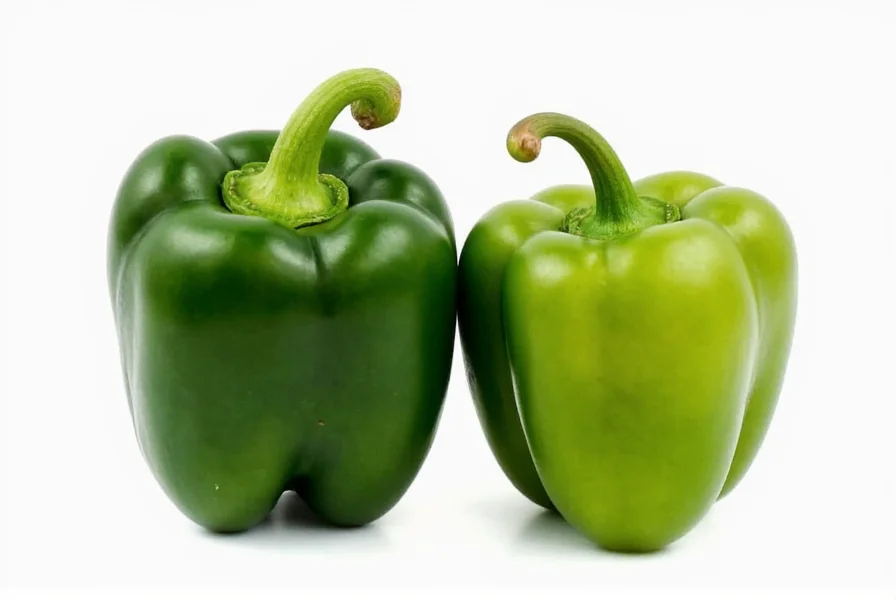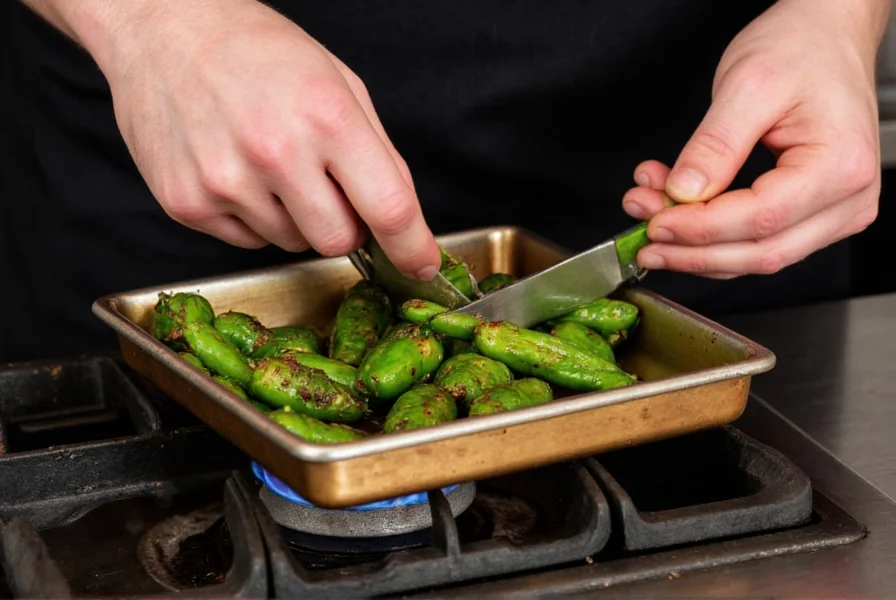Understanding the differences between poblano and jalapeño peppers is essential for home cooks and culinary enthusiasts seeking to perfect their dishes. These two popular chili peppers often appear in Mexican cuisine but serve distinctly different purposes in the kitchen based on their unique characteristics.
Heat Level Comparison: Poblano vs Jalapeño
When comparing poblano vs jalapeño heat levels, the difference is substantial. Poblanos register between 1,000-2,000 Scoville Heat Units (SHU), placing them at the lower end of the heat spectrum—similar to a bell pepper but with more complexity. Jalapeños, by contrast, range from 2,500-8,000 SHU, making them noticeably hotter. This heat difference significantly impacts their culinary applications.
The heat in chili peppers comes from capsaicin, concentrated primarily in the seeds and inner membranes. When handling jalapeños, especially for those sensitive to heat, wearing gloves is recommended. Poblanos rarely require such precautions due to their milder nature.
| Pepper Type | Scoville Heat Units | Heat Level Description | Comparable Heat |
|---|---|---|---|
| Poblano | 1,000-2,000 SHU | Mild, earthy | Slightly hotter than bell pepper |
| Jalapeño | 2,500-8,000 SHU | Moderate to hot | 2-4 times hotter than poblano |
Physical Characteristics and Appearance
Visually distinguishing poblano vs jalapeño peppers is straightforward. Poblanos are larger, typically measuring 4-6 inches long with a broad, heart-shaped body and thick walls. They start dark green and mature to a rich, deep red. When dried, red poblanos become ancho peppers, prized for their sweet, raisin-like flavor.
Jalapeños are noticeably smaller, usually 2-3 inches long, with a cylindrical shape and smoother skin. They maintain a bright green color when immature but turn red when fully ripe. Their thinner walls make them more suitable for pickling and canning.

Flavor Profiles and Culinary Applications
The flavor difference between poblano and jalapeño peppers significantly impacts their culinary uses. Poblanos offer a deep, earthy, almost tobacco-like flavor with subtle fruit notes, especially when roasted. This makes them ideal for stuffing (like in chiles rellenos), adding to mole sauces, or incorporating into soups where their mild heat won't overwhelm other ingredients.
Jalapeños provide a brighter, grassier flavor with noticeable citrus notes. Their moderate heat makes them versatile for salsas, guacamole, nacho toppings, and pickled preparations. When selecting between poblano vs jalapeño for recipes, consider whether you need background flavor complexity (poblano) or forward heat and brightness (jalapeño).
Substitution Guidance: Can I Replace One with the Other?
When considering if you can substitute poblano for jalapeño (or vice versa), the answer depends on your recipe's requirements. If you need mild heat and earthy flavor, use poblano. For more pronounced heat and brighter flavor, choose jalapeño.
For poblano vs jalapeño substitution:
- Replacing jalapeño with poblano: Use 1.5-2 poblano peppers for each jalapeño to compensate for the heat difference
- Replacing poblano with jalapeño: Use half the amount of jalapeño to avoid excessive heat
- For roasted applications: Poblanos cannot be adequately substituted with jalapeños due to different roasting behaviors
Storage and Preparation Tips
Proper storage extends the usability of both peppers. Store fresh poblanos and jalapeños in the refrigerator's crisper drawer in a paper bag for up to 2-3 weeks. For longer storage, roast and freeze poblanos (they freeze better than jalapeños due to thicker walls), or pickle jalapeños.
When preparing these peppers:
- Poblanos: Roast over open flame until blistered, steam in a covered bowl, then peel skin before use
- Jalapeños: Typically used raw or pickled; roasting changes their flavor profile significantly
- Always remove seeds and membranes to reduce heat in both varieties

Nutritional Comparison
Both peppers offer impressive nutritional benefits, though with some differences. Poblanos contain slightly more vitamin C and vitamin B6, while jalapeños have marginally higher vitamin A content. Both are excellent sources of capsaicin, which has been linked to various health benefits including improved metabolism and reduced inflammation.
When analyzing poblano vs jalapeño nutritional value, remember that their primary difference lies in capsaicin content rather than significant nutritional variations. Both contribute valuable antioxidants and vitamins to your diet with minimal calories.
Frequently Asked Questions
Which pepper is hotter, poblano or jalapeño?
Jalapeños are significantly hotter than poblanos. Poblanos range from 1,000-2,000 Scoville Heat Units while jalapeños range from 2,500-8,000 SHU, making jalapeños approximately 2-4 times hotter than poblanos.
Can I substitute poblano for jalapeño in recipes?
Yes, but with adjustments. When substituting poblano for jalapeño, use 1.5-2 poblano peppers for each jalapeño to compensate for the heat difference. For the reverse substitution, use half the amount of jalapeño to avoid excessive heat. Note that roasted applications work best with poblanos.
What's the difference between fresh poblano and dried ancho peppers?
Ancho peppers are simply dried poblano peppers. The drying process transforms their flavor from fresh and earthy to sweet with notes of raisin, prune, and tobacco. Anchos have a deeper, more complex flavor profile and are commonly used in mole sauces and other traditional Mexican dishes.
How do I reduce the heat of jalapeños without losing flavor?
To reduce jalapeño heat while preserving flavor, carefully remove all seeds and white membranes (where most capsaicin resides). Soaking sliced jalapeños in milk or soaking them in a vinegar-sugar solution can also moderate heat while maintaining flavor complexity.
Which pepper is better for stuffing, poblano or jalapeño?
Poblanos are superior for stuffing due to their larger size, thicker walls, and milder heat. Their heart-shaped structure creates an ideal pocket for fillings like cheese, meat, or rice. While jalapeños can be stuffed (as in jalapeño poppers), they provide less filling space and deliver significantly more heat.










 浙公网安备
33010002000092号
浙公网安备
33010002000092号 浙B2-20120091-4
浙B2-20120091-4